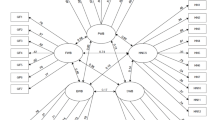Play all audios:

Good clinical practice is dependent on continuous audit. Most audits of head and neck cancer treatment planning have been subjective, with only 5-year survival rates being considered
objectively. Improvements in clinical care require not only measurable goals that relate to patients' perspectives, but also a means of assessing to what extent those goals have been met. In
this context, 5-year survival rates are too crude to be useful, although they remain important for other reasons. Because a simple clinical objective measure of outcome applicable to head
and neck cancer is not available, multiattribute assessment techniques were used to develop a clinically based scale for outcomes following treatment for head and neck cancer, with domains
centred on social function, pain, physical appearance, eating and speech problems, nausea, donor site problems and shoulder function. Domains were weighted relative to each other; pain (mean
weight 85) and social function (89) were considered most important followed by physical appearance (76), eating (76) and speech problems (74) A series of graded statements was constructed
within each domain and scaled relative to each other. These components were also combined into an overall scale that will enable objective outcome assessment in this important area of
medical care.
Anyone you share the following link with will be able to read this content:
